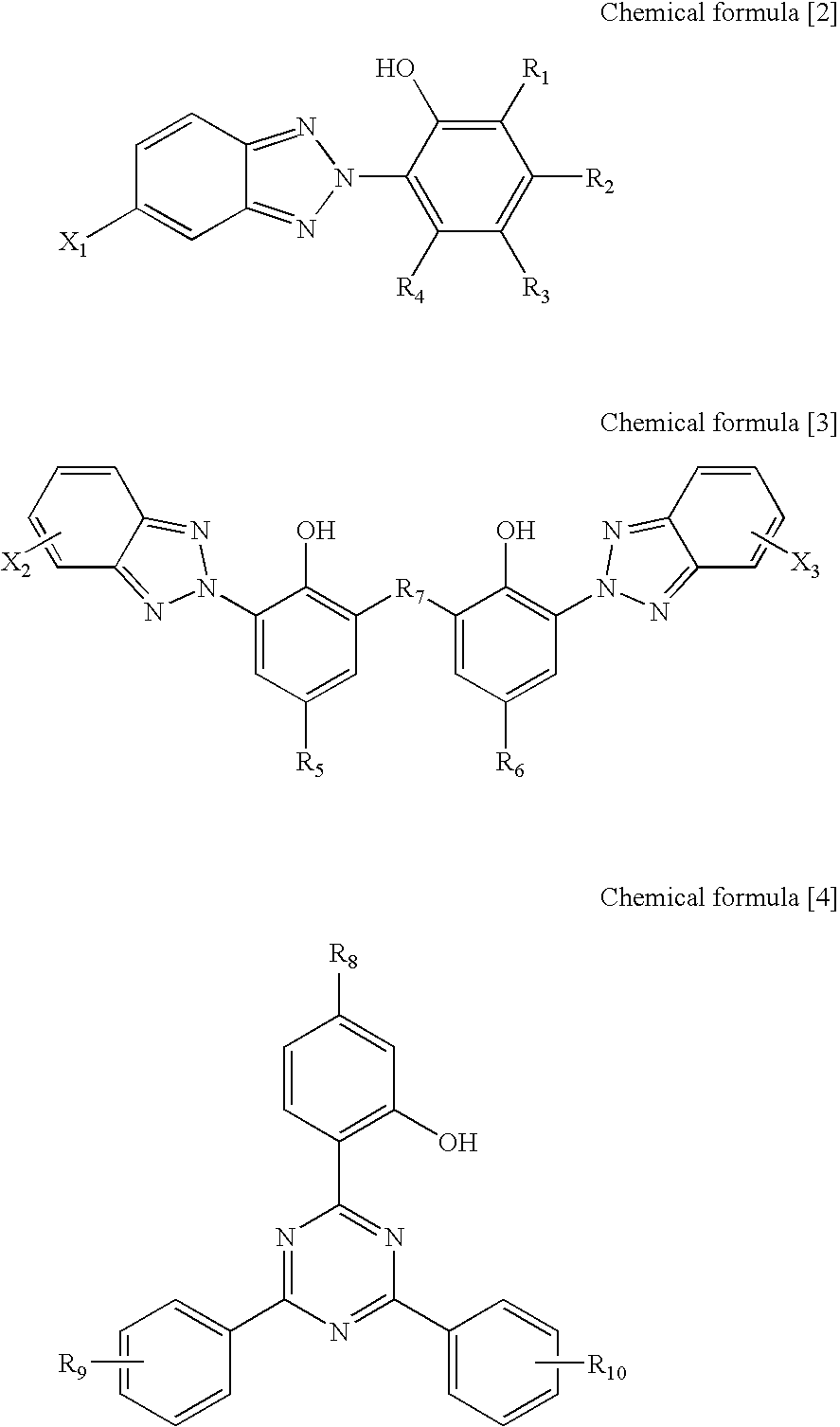Resin composition for optical material
- Summary
- Abstract
- Description
- Claims
- Application Information
AI Technical Summary
Benefits of technology
Problems solved by technology
Method used
Image
Examples
examples
[0281]Next, the present invention will specifically be described in the following examples,
[0282]An evaluation method used in the present invention and the examples will be described.
[0283](1) Evaluation Method
[0284](I) Measurement of Photoelastic Coefficient, Judgment of Positive or Negative Inherent Birefringence
[0285](Measurement of Photoelastic Coefficient)
[0286]A birefringence measurement device described in detail in Macromolecules 2004, 37, 1062-1066 is used. A tension device for a film is placed in a path of laser light. The birefringence of a test piece of a resin composition with a width of 7 mm is measured at 23° C., while a tensile stress is applied to the piece. A strain rate during stretching is set to 20% / minute (a length between chucks: 30 mm, a chuck movement speed: 6 mm / minute).
[0287]Values measured in this way are plotted as coordinates with a y-axis indicating a birefringence (Δn) and an x-axis indicating a stretch stress (σR). The gradient of the initial straigh...
trial example 4
[0366]A mixed solution composed of 48 parts by mass of methyl methacrylate, 5 parts by mass of styrene, 17 parts by mass of methacrylic acid, 30 parts by mass of cyclohexanol (water content: 2%, solubility parameter 6=11.4), 50 ppm of 1,1-di(tert-butylperoxy)cyclohexane and 1400 ppm of n-octylmercaptan was prepared, followed by bubbling with a nitrogen gas for 10 minutes. The resulting mixed solution was continuously fed to a jacketed mixing reactor having an internal volume of 3 L at a rate of 1.5 L / hr for polymerization. After reaction at a polymerization temperature of 135° C. for 2 hours, the polymer was dissolved completely and a solid content of the polymer contained in the polymerization solution was 40% by mass. Immediately after that, the polymerization solution was continuously fed through a heater to a devolatilizing tank. Unreacted monomers and solvent were removed and the 6-membered-ring-containing unit was formed in the devolatilizing tank by holding the polymerization...
examples 1 , 3 to 5 , 41 to 45
Examples 1, 3 to 5, 41 to 45 and Comparative Examples 1 to 4, 9, 12
[0370]Resin compositions with blend ratios described in Table 1 were extruded to obtain undrawn films by using an extruder (KZW15TW-25MG-NH type / provided with a T-die having a width of 150 mm / a lip with a thickness of 0.5 mm) provided with the T-die and manufactured by Techno Bell Co., while adjusting a screw rotation number, a temperature of the resin in a cylinder of the extruder and a temperature of the T-die.
[0371]A composition, extrusion molding conditions, a film thickness and a photoelastic coefficient of each undrawn film are shown in Table 1. For comparison, the photoelastic coefficient of a commercial triacetyl cellulose (TAC) film (LOFO manufactured by High Tech Film Co., trade name TACPHAN, having a positive photoelastic coefficient and a positive inherent birefringence) is shown as Comparative Example 4.
[0372]Any of undrawn films (Examples 1, 3 to 5, 41 to 45) of the present invention had a small absolut...
PUM
| Property | Measurement | Unit |
|---|---|---|
| Temperature | aaaaa | aaaaa |
| Percent by mass | aaaaa | aaaaa |
| Percent by mass | aaaaa | aaaaa |
Abstract
Description
Claims
Application Information
 Login to View More
Login to View More - R&D
- Intellectual Property
- Life Sciences
- Materials
- Tech Scout
- Unparalleled Data Quality
- Higher Quality Content
- 60% Fewer Hallucinations
Browse by: Latest US Patents, China's latest patents, Technical Efficacy Thesaurus, Application Domain, Technology Topic, Popular Technical Reports.
© 2025 PatSnap. All rights reserved.Legal|Privacy policy|Modern Slavery Act Transparency Statement|Sitemap|About US| Contact US: help@patsnap.com



